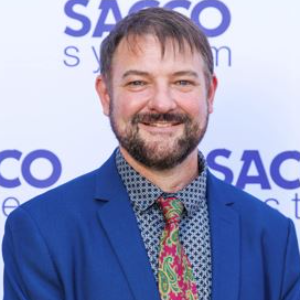Title : Overcoming manufacturing challenges in next-generation probiotics: From anaerobic cultivation to clinical-grade formulation
Abstract:
Next-generation probiotics (NGPs), consisting of non-traditional commensal microorganisms with targeted health benefits, are at the forefront of microbiome-based therapeutics. Unlike conventional probiotics, NGPs such as Faecalibacterium prausnitzii, Bacteroides xylanisolvens, Alistipes shahii, and Mediterraneibacter faecis are strict anaerobes with complex metabolic requirements and heightened sensitivity to oxygen, presenting substantial challenges for industrial-scale cultivation and formulation. This presentation addresses the critical bottlenecks and bioprocessing strategies necessary to support the translation of these organisms into clinically viable products.
Production begins with anaerobic cultivation under tightly controlled conditions, including bioreactor systems equipped with continuous monitoring of redox potential, pH, and gas composition. Custom growth media must be optimized to exclude animal-derived components and known allergens while meeting regulatory requirements for GRAS (Generally Recognized as Safe) status. The nutritional profiles of these organisms often demand supplementation with specific short-chain fatty acids, vitamins, and specific carbohydrates. For example, optimized fermentation of F. prausnitzii in buffered, defined media supplemented with acetate and yeast peptone has achieved stable yields of up to 5 × 10? CFU/g (dry weight) in anaerobic bench-scale systems.
Lyophilization (freeze-drying) remains the preferred method for stabilizing anaerobic NGPs, but standard protocols are inadequate for highly oxygen-sensitive strains. Optimization of lyophilization involves the selection and pre-conditioning of cells with appropriate cryoprotectants—such as trehalose, maltodextrin, ascorbate, or cysteine—and careful control of freezing and drying kinetics. Critical parameters include freezing rate (to minimize intracellular ice formation), primary drying pressure and temperature (to maintain structural integrity), and secondary drying for moisture content reduction. Post-lyophilization viability assessment must be conducted under anaerobic conditions using colony-forming unit (CFU) enumeration and validated flow cytometry protocols with membrane integrity stains (e.g., SYTO 9/propidium iodide). Stabilized formulations may also be combined with enteric coatings or encapsulation systems to enhance shelf-life and targeted delivery.
Throughout the development process, integration of advanced analytical methodologies is essential for product quality and regulatory compliance. This allows implementation of a quality-by-design (QbD) framework, which supports reproducibility, scalability, and consistency during technology transfer and regulatory submission.
In summary, the development of NGPs for therapeutic use requires a multidisciplinary approach encompassing anaerobic microbiology, process engineering, regulatory science, and analytical innovation. This presentation provides a comprehensive overview of current best practices and emerging strategies for overcoming the key challenges in the manufacturing of NGPs, with the goal of enabling their successful integration into clinical pipelines and commercial markets.




